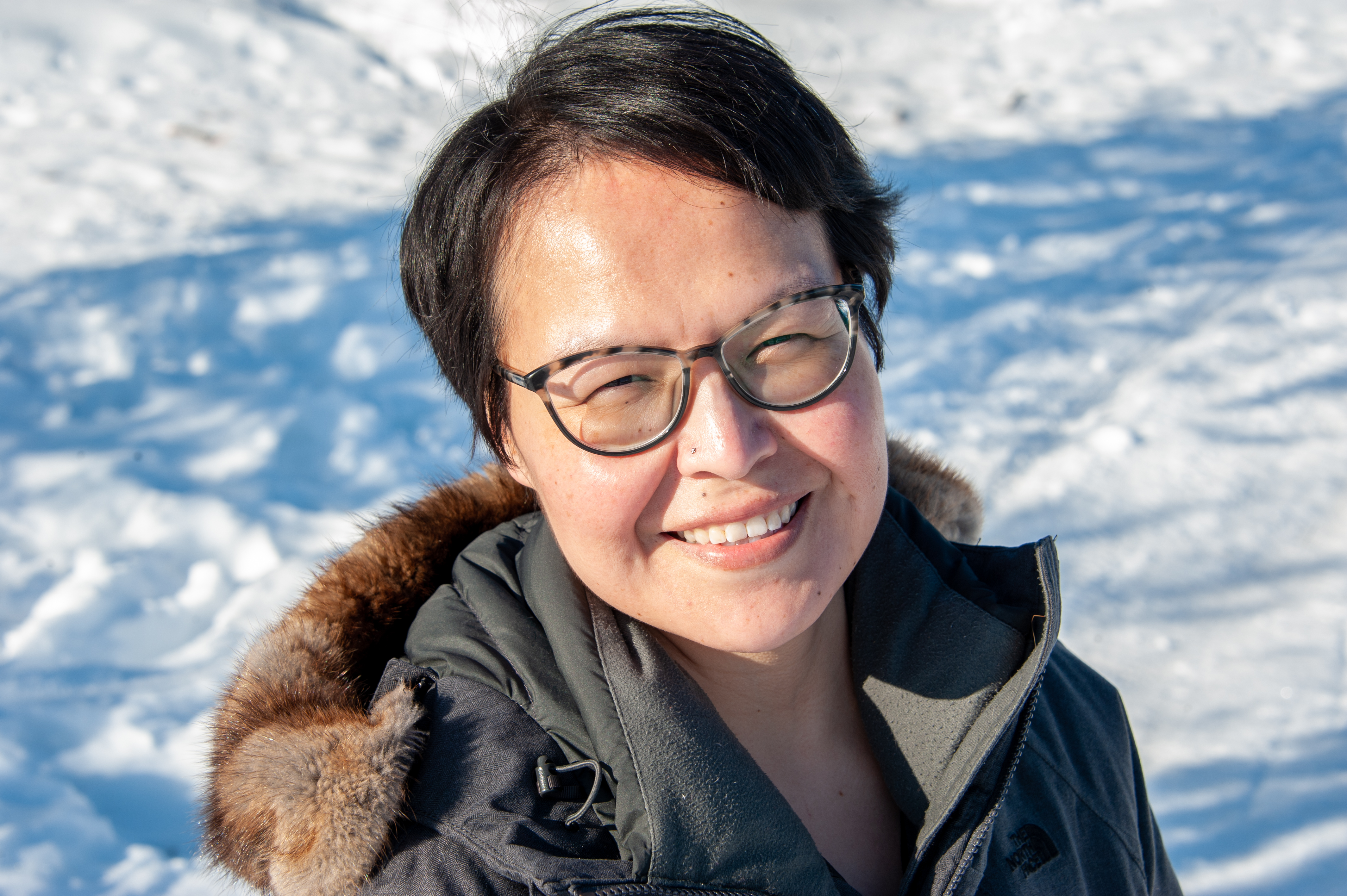Strong Like Two People
2 June 2025

Lianne Mantla-Look
When Lianne Mantla-Look (BScN 12) was invited to be part of a “Honouring Indigenous Voices,” a student-led Faculty of Nursing history project, she was drawn in from the start, especially when the students told her there was a lack of Indigenous representation in the Faculty of Nursing’s history room. That stuck with her. She knew Indigenous nurses existed—not just at the University of Alberta, but across the country. She wanted to be involved so that people would see that clearly: we’re here, and we’ve been here.
She is truly ‘strong like two people.’ Lianne is Tłı̨chǫ, and one of the most renowned Tłı̨chǫ chiefs, Jimmy Bruneau, used this phrase to evoke his dream for future generations of Tłı̨chǫ youth. Being strong like two people, means being grounded in Tłı̨chǫ language, culture, and way of life, while also being knowledgeable of the mainstream Canadian world. Lianne is fluent in her language and was raised with knowledge of who she is as a Tłı̨chǫ woman. But she is also well trained as a nurse and researcher. She is able to apply these two lenses in everything she does – and this sets her apart from many of her peers in the health system.
Lianne was the first person from the Tłı̨chǫ region to obtain a degree in nursing, a proud fact for her and many of the Elders in the region. When, due to a family emergency, she went back home to Behchokǫ̀ and began working in the health centre, she found that going back to work in her home community wasn’t easy. Some people didn’t want her there. She had been gone since she was 18. But the Elders—especially those who didn’t speak English—welcomed her. Being fluent in her first language, Tłı̨chǫ, helped her connect. She could build trust, explain treatments clearly, and offer care in a way that felt familiar and respectful. It reminded her why she became a nurse in the first place.
On her first day working in the clinic back home, she was treating an Elder who, when they got to the exam room asked her, “Don’t you need an interpreter?”
When Lianne responded in Tłı̨chǫ, “Why would I need an interpreter? I can understand you just fine,” the Elder’s face lit up in shock, then she burst out laughing.
“When she realized I was originally from the community, she immediately asked who my parents and grandparents were—that's the only way to determine your place in a community - knowing who you come from,” Lianne said.
After the appointment, Lianne walked her to the waiting room, where the Elder shook her hand and told her how happy she was to have a Tłı̨chǫ-speaking nurse in the community.
Relationship Building is Everything
Lianne doesn’t like being called a role model. It makes her uncomfortable. But if her story helps students—Indigenous or not—then she’s willing to share it. She remembers being told, during her training, that the only reason she’d be hired was because she was Indigenous. That kind of racism wasn’t unique, but it didn’t stop her. She didn’t see it as a test to overcome. She just knew that person was wrong—and she kept going.
When invited by Dr. Gillian Lemermeyer to speak to a class of after-degree nursing students, someone asked Lianne what kind of person should work in Indigenous communities. Her answer was simple: “Someone who is prepared to stay and be involved in the community.”
After the class, Dr. Lemermeyer highlighted the impact of that response for the students: “It moved away from a saviour or rescuer narrative and instead embraced a more collaborative, ‘let's live together’ perspective.”
In her own community, people are used to new nurses and doctors coming and going. They don’t open up right away. An Elder shared with Lianne that it often takes four to six visits to an appointment before patients fully share what’s going on. They want to know you’re going to stay before they get invested into a relationship with their care provider.
This need for trust and continuity is something Lianne understands deeply, and it's where her connection to the community and language becomes especially powerful.
Lianne sees her Indigenous identity as a natural part of who she is. What stands out most in her work as a nurse is the deep impact of speaking to patients in their first language, Tłı̨chǫ. For many Elders, it brings comfort, trust, and a sense of being understood without the need for an interpreter.
“My language is what connects me to my culture and my people,” she says.
“When I have a Tłı̨chǫ Elder as a patient, immediately my care is provided in Tłı̨chǫ, and I know that the Elder feels comfortable being looked after by someone they know who can understand them at the most basic level. My language is what helps me bridge the communication gap.”
Raised speaking Tłı̨chǫ at home, it’s second nature for her to use it when caring for Elders. For Lianne, language is more than a tool—it's essential to good care. It helps patients better understand their treatment, ask questions, give informed consent, and feel truly heard.